
If you listen to some experts, hydrogen, as a vehicle fuel, is dead in the water before it has even become a reality.
Some critics point out battery electric vehicles (BEVs) are now so dominant in the zero-emission transport sector that there is no need for hydrogen; that there is a fatal lack of fuelling infrastructure and there are also engineering issues which restrict the efficiency of the gas-powered vehicles.
So why are vehicle manufacturers, other private sector businesses and governments continuing to spend so much time and money developing the technology?
In the UK, much of this is down to how hydrogen can help the country achieve its wider 2050 net-zero target.
It has the potential to be used in industrial processes to generate heat instead of burning natural gas, and the same is true in domestic heating with trials and research currently taking place.
Hydrogen can also be used to store energy. For example, any excess energy created through wind power at times of low demand could be used to create hydrogen through electrolysis, and this could then be stored for use later when demand for electricity increases.
Transport is a further potential use for the fuel. The Government’s Hydrogen Strategy describes it as “likely to be fundamental to achieving net-zero in transport, potentially complementing electrification across modes of transport such as buses, trains and heavy goods vehicles”.
As a vehicle technology, it does have several advantages over battery electric. Fuel cell powertrains do not require any critical raw materials such as cobalt, lithium or nickel which are used in BEVs and they don’t require a large battery to be able to travel hundreds of miles, thus reducing the weight of the vehicle and avoiding payload issues.
A further attraction for fleets is that refuelling times are similar to those of petrol and diesel vehicles, meaning greater convenience and less downtime for vehicles.
Also, supporters do not suggest hydrogen fuel cell vehicles will make BEVs defunct, but that they will exist side-by-side, just as petrol and diesel have for many years.
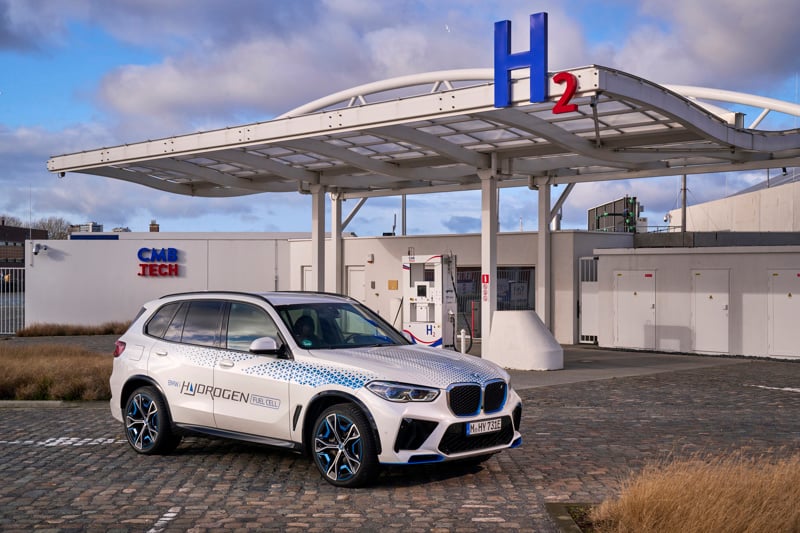
Numerous obstacles
However, as mentioned earlier, the technology does have numerous obstacles to overcome for it to become a realistic option.
“The problem with hydrogen is the supply of it – there’s not enough stations,” says Aaron Powell, head of fleet at Speedy Asset Services, which has commissioned Electra Commercial Vehicles to build it a hydrogen vehicle, which it expects to take delivery of next year.
Powell adds: “We’ve aligned that vehicle to come in as some planned new stations are opened. There’s one being opened in Glasgow and there’s one being opened in St Helens, which isn’t far from our Warrington site, and they are both due to be open by 2024.
“Our vehicle will then come in and do a Warrington to Glasgow run so it can fuel up at both places.”
A report published in March by industry body Hydrogen UK says the country is trailing other nations in terms of refuelling station deployment.
The Hydrogen Transport Benchmarking document says nine stations were funded by the Government’s Hydrogen Transport Programme in 2017, but six of these were able to dispense less than 100kg of hydrogen a day, meaning they were able to refuel only around 20 passenger vehicles each 24-hour period.
Analysis from UK H2 Mobility has found these smaller stations are generally less reliable and can therefore lead to premature closures.
This has been seen through the recent closures of stations in Swindon, Cobham and Gatwick, meaning there are now only six operational stations left in the UK, says Hydrogen UK.
However, this is set to increase and projects include the UK’s first hydrogen transport hub, located in the Tees Valley, which has been kickstarted by £3 million of Government funding.
This will enable hydrogen for transport to develop alongside its application in the industrial, energy and other sectors.
The hub will provide up to 13,000kg of green hydrogen per day to operate transport in the region in a five-year trial from 2025.
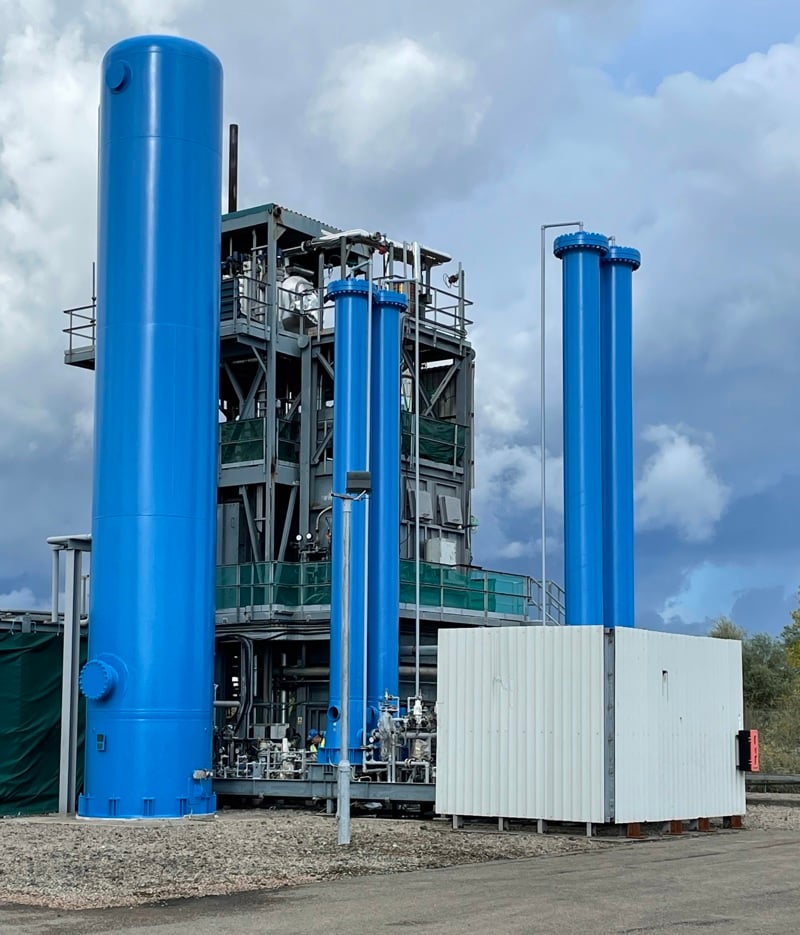
Fuelling station growth
Numerous other refuelling facilities are also being planned. Element 2, for example, aims to open five sites in the next few months, followed by having 30 further locations operational or under construction in the UK by the end of the year.
The initial roll-out will focus on servicing heavy trucks and light commercial vehicles. The company is concentrating on the UK’s 147 truck stops, but private cars will be able to use the stations.
Element 2 has a hydrogen supply contract with chemical giant Ineos, where the gas is a by-product of an industrial chemical process.
In South Wales, Air Products (pictured above) is making a £6.5m investment in a hydrogen filling station at its Llanwern hydrogen facility.
The station, which is expected to be operational by early summer, will make 1.5 tonnes of fuel-cell grade hydrogen available daily, with capacity to serve a fleet of 100 buses or 50 trucks.
Vehicle manufacturers are also investing heavily in the technology. Toyota and Hyundai lead in the passenger car sector, with their Mirai and Nexo models, respectively, the only production fuel cell vehicles available in the UK.
Toyota also recently unveiled a project which will lead to the production of a hydrogen-powered Hilux pick-up using £11.3m funding secured through the UK Government’s Advanced Propulsion Centre (APC).
A prototype vehicle (pictured below), based on the existing Hilux, will be engineered at the company’s plant in Burnaston, Derbyshire, and will use components from the manufacturer’s second-generation fuel cell system, as featured in the Mirai. The intention is to prepare the vehicles for small series production.
BMW last month launched a fleet of around 100 iX5 Hydrogen SUVs into its European markets for demonstration and trial purposes as it steps up plans to diversify its alternative fuel vehicle offering, while Stellantis has committed to mass production of its Peugeot Expert, Citroen Dispatch and Vauxhall fuel cell vans.
The hydrogen technology has also opened the door for start-ups to enter the market. These include Glasgow-based Hydrogen Vehicle Systems (HVS), which also received funding from the APC, this time a £15m grant for a hydrogen HGV, while First Hydrogen and Tevva are also developing fuel cell commercial vehicles.
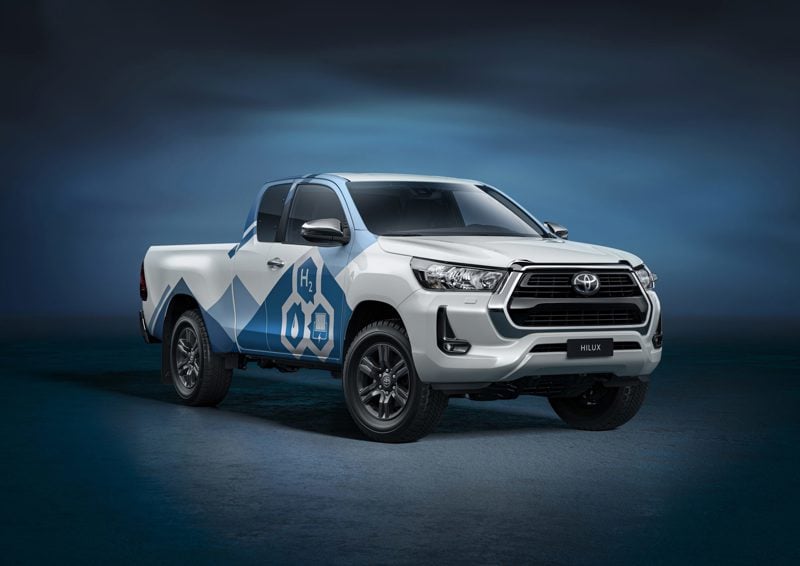
The right applications
A widespread train of thought is that hydrogen powertrains will be best suited for commercial vehicles, with BEVs being more relevant for passenger cars.
“Hydrogen is not the only answer for transport and it absolutely is the case that where you can use electricity to move and decarbonise you should do it,” says Jane Toogood, UK Hydrogen Champion and chief executive of Catalyst Technologies.
“There is, however, a need to be pragmatic and realistic about the transition we need to make by 2050, and it is huge.
“There are some places where, for example, on road transport and heavy goods vehicles where using battery vehicles looks much more difficult and where using hydrogen can be a much more sensible way forward.”
However, to seize on the opportunities offered by the gas, industry body Hydrogen UK is calling for a coordinated national transport strategy.
It wants the UK to establish a minimum viable network of 200 hydrogen refuelling stations by 2030, and to ensure the roll-out of more hydrogen ecosystems such as the Tees Valley hub.
“We know that hydrogen has a critical role to play in the decarbonisation of transport,” says Clare Jackson, CEO of Hydrogen UK.
“The UK Government and hydrogen industry must respond to ensure that we capitalise on the opportunities presented by this critical resource, which will help to drive the decarbonisation of our transport sector.”
Fleets keen to try hydrogen technology
Research by Cenex has found few fleets have immediate plans to introduce hydrogen vehicles, but there is a strong willingness to trial them.
It reports most fleets are considering some fuel-cell vehicles by 2030 assuming that suitable, affordable vehicles are available and are supported by a network of reliable refuelling stations supplying low-cost, green hydrogen.
Green hydrogen uses renewable energy to create it through a process called electrolysis, meaning no carbon is created during its generation.
As well as Speedy Asset Services (see main text), numerous other organisations are already exploring the potential of hydrogen-powered vehicles.
These include the AA, which has revealed a Hyundai Nexo fuel cell roadside breakdown vehicle to target breakdown jobs in ultra-low emission zones, and Centrica, which is investigating converting some of its British Gas fleet to hydrogen as part of an wider agreement with Ryze Hydrogen to develop and operate hydrogen production and refuelling facilities.
Aberdeen City Council has awarded a contract to Ulemco to convert an initial 35 vehicles to its hydrogen dual-fuel powertrains (picture at top of article). These include refuse collection vehicles and road sweepers, as well as a variety of other utility trucks including tippers and tractors.
The Scottish city currently has two hydrogen fuelling stations and the council has partnered with BP to develop a hydrogen hub, which will use solar power to create the fuel.
Phase one of the project involves building a refuelling facility for buses and trucks and aims to produce more than 800kg of green hydrogen per day from 2024: enough to fuel 25 buses and a similar number of other fleet vehicles.
Further developments will take place and by 2030 the hub could be producing hydrogen for rail, marine and heating properties.
“Hydrogen has become a valued fuel source in the city’s transport sector, with vehicles including buses, cars and refuse lorries already using it daily on our streets,” says Ian Yuill, co-leader of Aberdeen City Council.








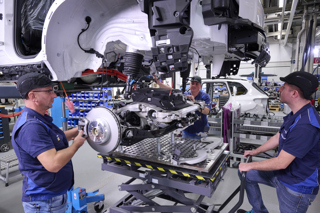
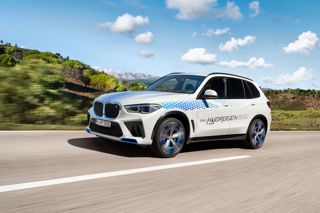













Login to comment
Comments
No comments have been made yet.